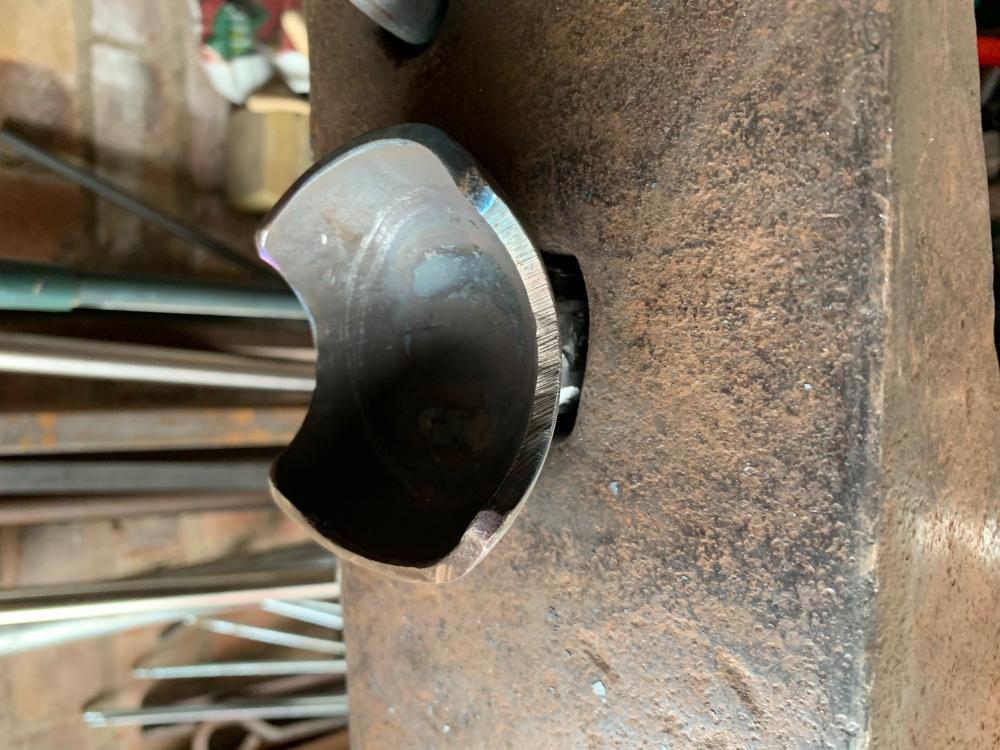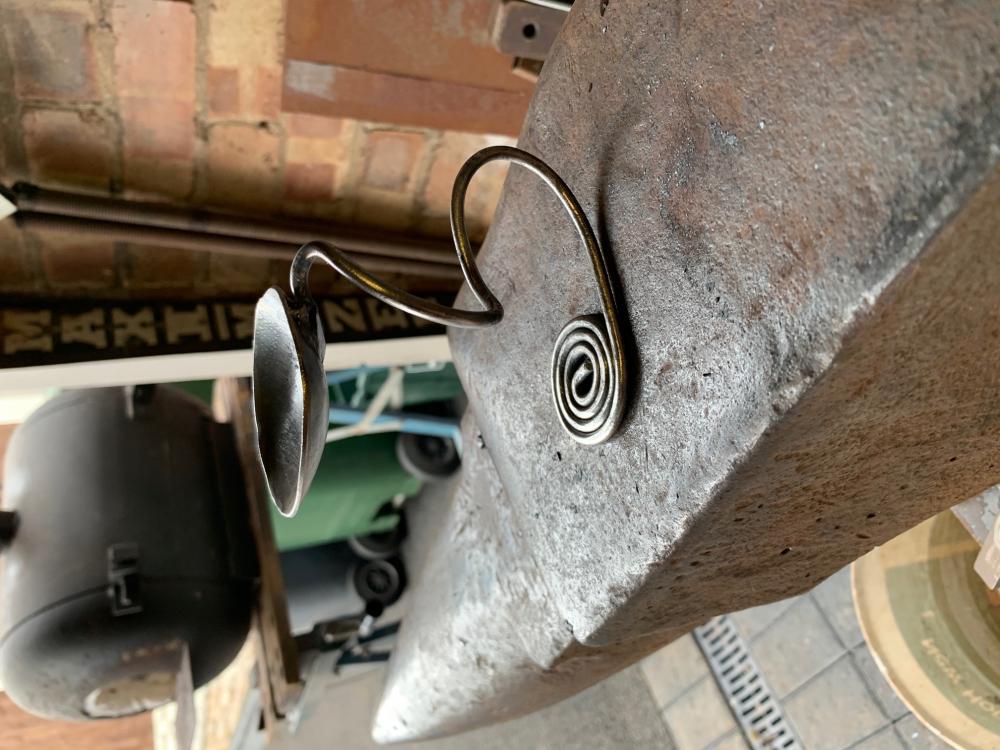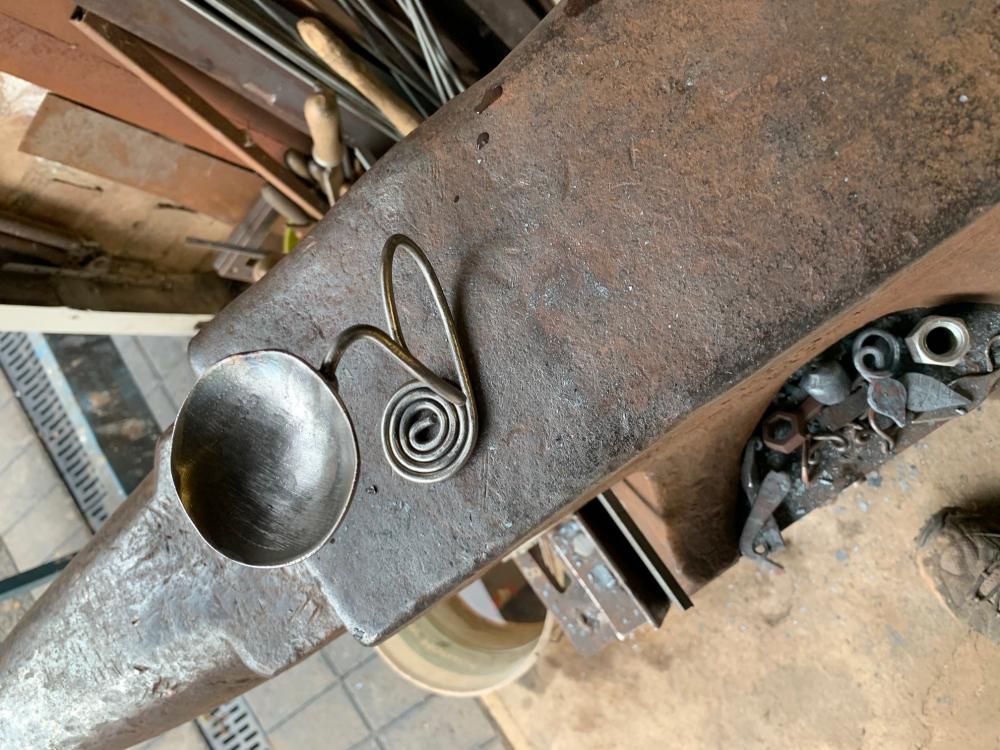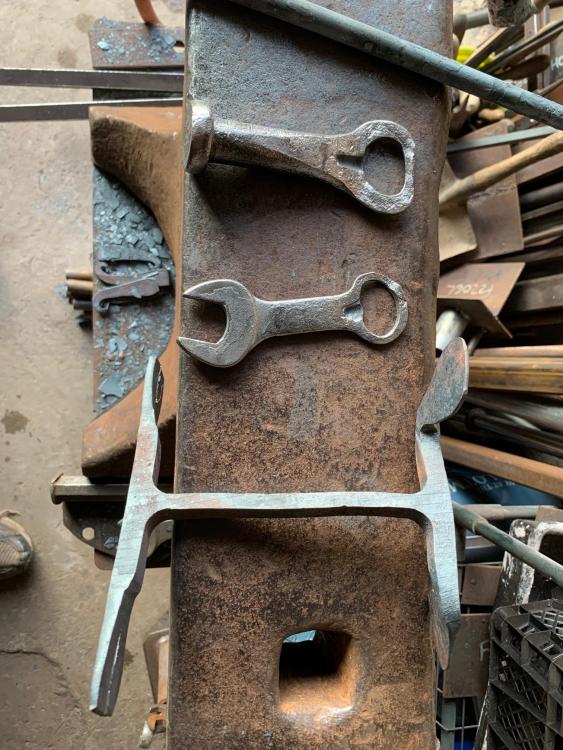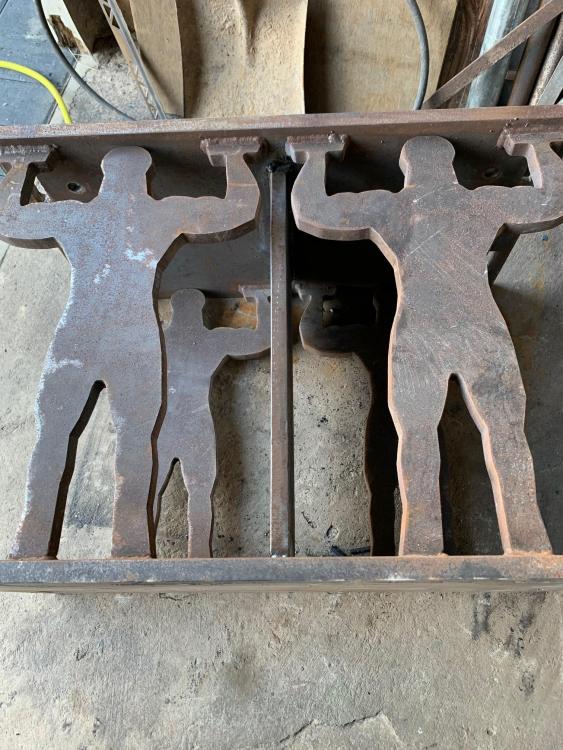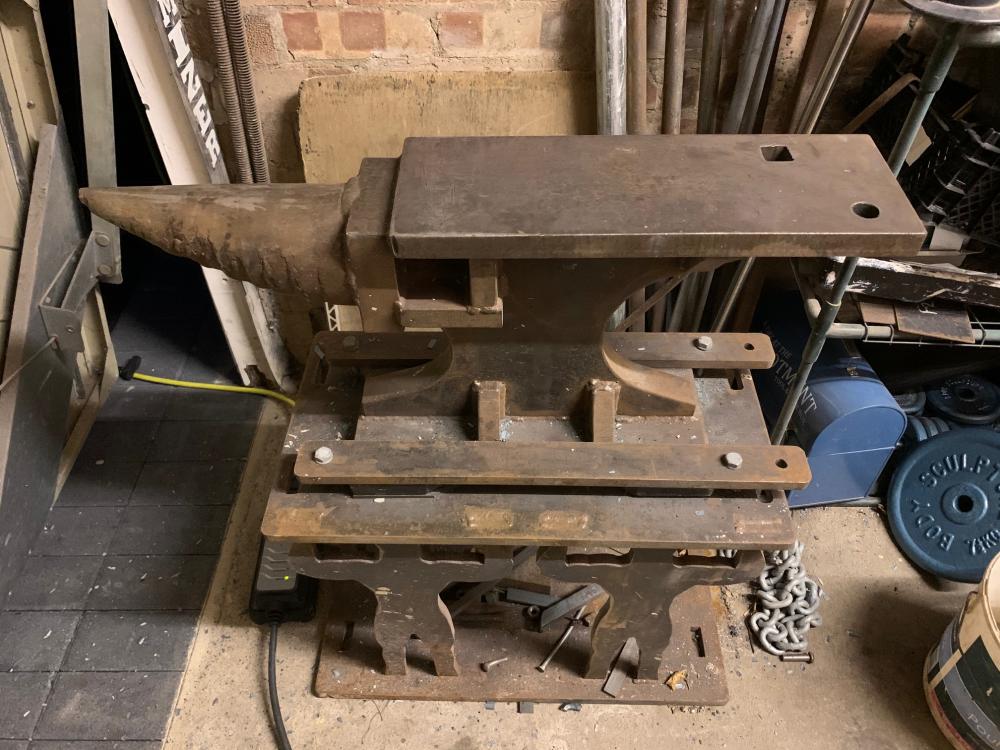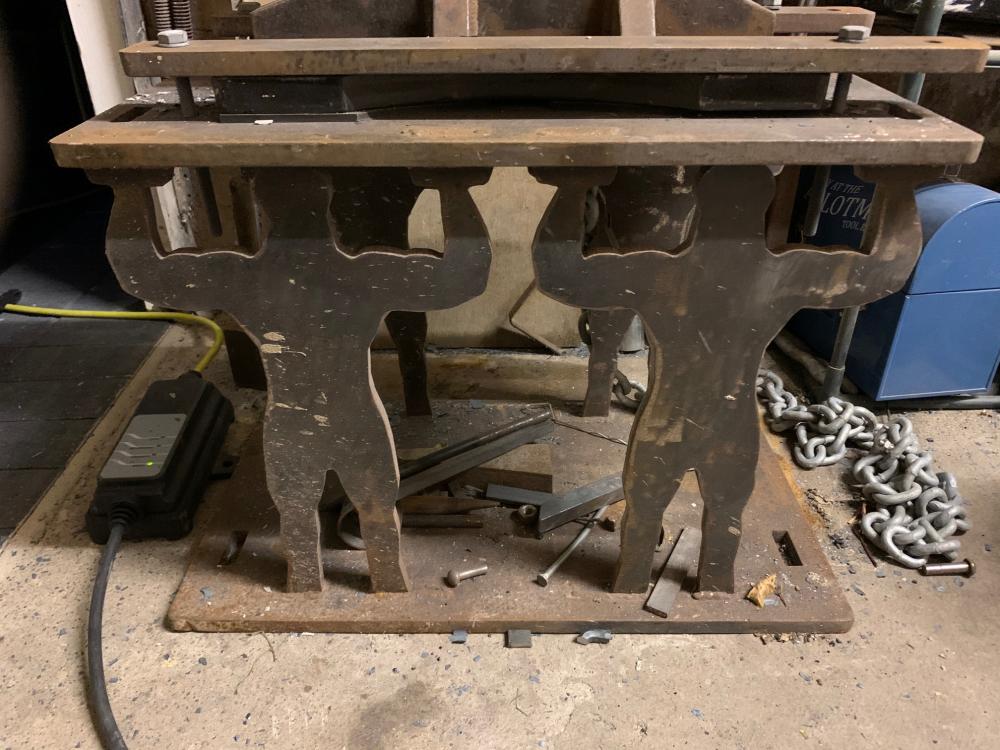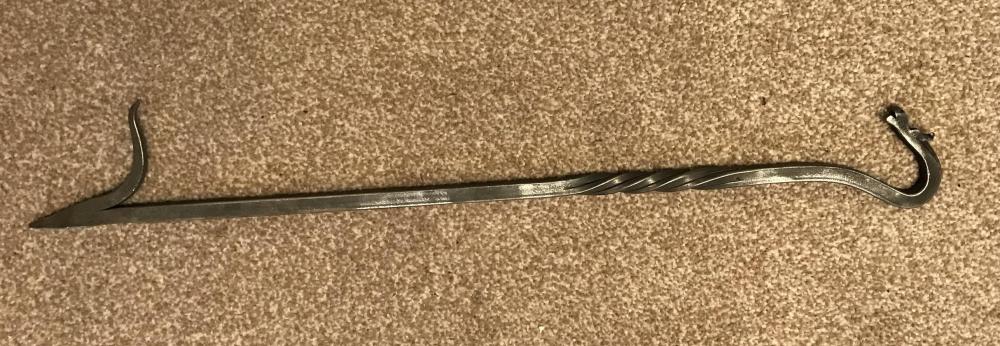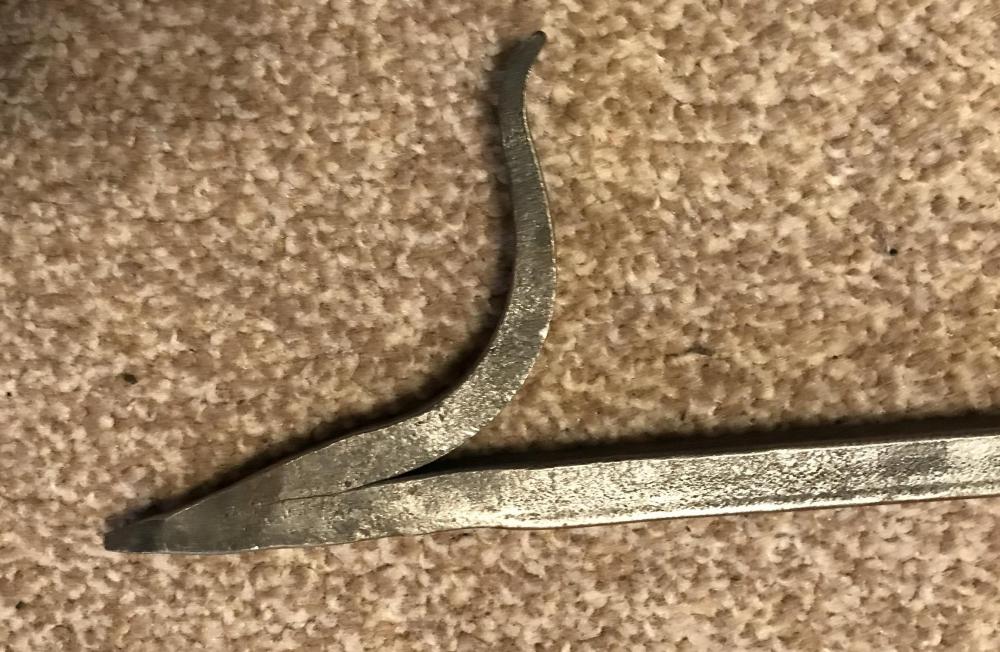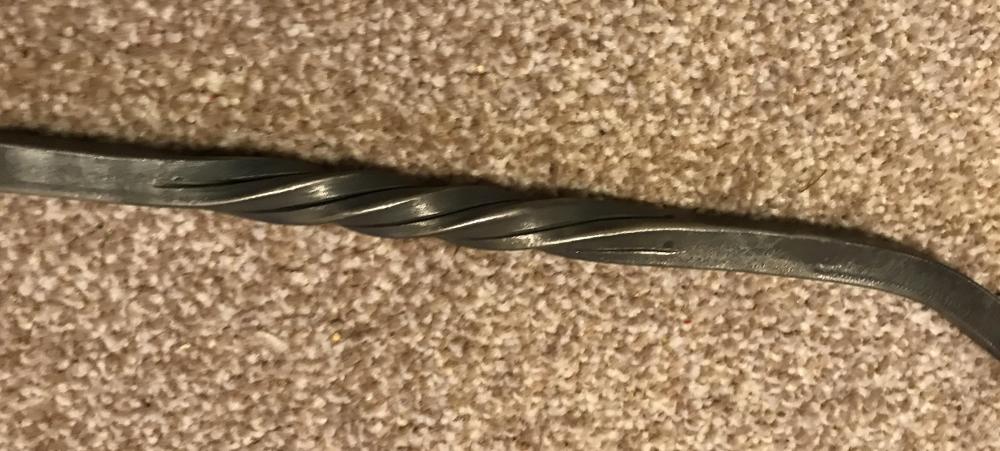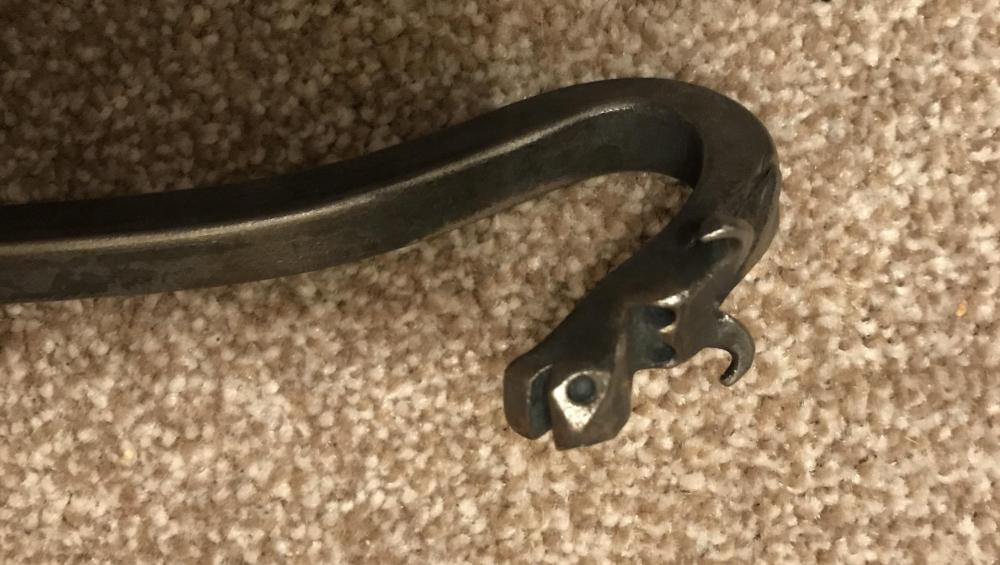
careful_eugene
Members-
Posts
18 -
Joined
-
Last visited
Content Type
Profiles
Forums
Articles
Gallery
Downloads
Events
Everything posted by careful_eugene
-
What did you do in the shop today?
careful_eugene replied to Mark Ling's topic in Blacksmithing, General Discussion
They look pretty good to me, what size steel did you use? -
What did you do in the shop today?
careful_eugene replied to Mark Ling's topic in Blacksmithing, General Discussion
Thanks, it's more stable than it looks but I'll see about fastening it down to a piece of wood. -
What did you do in the shop today?
careful_eugene replied to Mark Ling's topic in Blacksmithing, General Discussion
Made a small dishing tool from a handrail knuckle then a wax melt burner for my daughter using the dishing tool. -
What did you do in the shop today?
careful_eugene replied to Mark Ling's topic in Blacksmithing, General Discussion
Goods, they look superb and I think the leather holder is the right way to go. -
What did you do in the shop today?
careful_eugene replied to Mark Ling's topic in Blacksmithing, General Discussion
I made 2 bottle openers (on Sunday), one from an old spanner and one from a shear-stud although I think the hole in the shear stud is too large. I also started a double candle holder from a trimmed off piece of UC that I found in the scrap bin at work, not sure how it's going to turn out yet. -
A collection of improvised anvils
careful_eugene replied to Charles R. Stevens's topic in Anvils, Swage Blocks, and Mandrels
Makes sense, thanks for the feedback. I've put the plate in the centre at 90 degrees to the outer supports. -
A collection of improvised anvils
careful_eugene replied to Charles R. Stevens's topic in Anvils, Swage Blocks, and Mandrels
It’s very stable, the hands and feet go through slots in the top and base plates and are welded both sides. Although to be fair, I’m only doing quite light work I think I’m going to put a plate in at 1 end for additional lateral stability as the new anvil is considerably heavier. -
A collection of improvised anvils
careful_eugene replied to Charles R. Stevens's topic in Anvils, Swage Blocks, and Mandrels
This is my mild steel ASO, I made it about 3 years ago and have been using it ever since, after joining this forum and reading about anvils and how they work I'm aware of the flaws in this one. We use a lot of thick plate where I work so getting profiles cut is easy, the total weight not including the stand is 77Kg. I was going to make a new one last year when one of the forks broke on our large fork-truck, the broken one was scrapped and I claimed the unbroken one, it was 250mm wide and 70mm at it's thickest point. Unfortunately I had a week off and when I came back it had been scrapped. I've recently bought a real anvil which I collect on Monday so am retiring this one. The stand is made using 16mm thick weathering steel and will probably be re-used with the new anvil. -
Storing an anvil so it does not rust
careful_eugene replied to Glenn's topic in Anvils, Swage Blocks, and Mandrels
We shrink wrap some very heavy equipment (bridge bearings etc) to pallets with the main aim of stopping them moving during transport. Some bearings weigh up to 150Kg so I believe it would work, the trick is to use heavy polythene and ensure that it's well sealed. -
Storing an anvil so it does not rust
careful_eugene replied to Glenn's topic in Anvils, Swage Blocks, and Mandrels
How about cleaning the anvil thoroughly then shrink wrapping in plastic together with a few sachets of silica gel? Ideally this would need to be undertaken in a dry environment. The main advantage would be that you wouldn't have to remove any grease oil or paint when you wanted to use the anvil again. -
Let’s see some fire pokers
careful_eugene replied to Jasent's topic in Blacksmithing, General Discussion
I spent a day last week with David Southgate, blacksmith at the Abbeydale Industrial Hamlet in Sheffield. I first went last year and made a hook, bottle opener and monkey skull keyring under his supervision, this time I wanted to try a few different processes (forge welding etc.) so asked if I could make a dragon head poker and toasting fork. Poker pictures are below. If you're ever in the Sheffield area the museum is a great place to visit, it's an old scythe works dating from the 18th century. -
Neighbors with noise conpliant
careful_eugene replied to Alex w's topic in Blacksmithing, General Discussion
Thanks for the advice, not sure my marriage is this strong! I'm a little ways off from useful or decorative at the moment but hope to get there in the end. -
Neighbors with noise conpliant
careful_eugene replied to Alex w's topic in Blacksmithing, General Discussion
Hi, whereabouts are you in Nottingham? I've just started forging (practising making hooks mainly) following a whole day spent with a blacksmith in Sheffield. I too use a gas forge but haven't had any noise complaints yet just low level murmurings from the wife about how I ought to be making myself useful in the house rather than "messing about in the garage". -
Could this be a posture issue? I've heard of similar problems being solved by using support insoles. It might be worth investigating before buying and laying down sand or gravel.
-
Gate, one gate. My best work to date. Many large photos
careful_eugene replied to David Kailey's topic in Member Projects
Superb piece of work, I love the texturing on the tree. What finish will you use? -
Thanks for the replies chaps. There is the remains of a boss on the end of the bolt so it will only fit one way into the hole. The bolt is also slightly bent so it's probably a good idea to replace it with something more modern. Yes it is leaning quite a lot, I'll do that.
-
I have acquired a post vice that used to belong to my Grandfather, and great Grandfather before him. They were builders not blacksmiths and the vice was attached to a large wooden bench in an out building adjacent to the house my mother still lives in. I can remember the bench being cut up and burnt in the early 1980’s as it was rotting and no longer of any use, the vice was nearly thrown in the skip but ended up in the corner of the out building. I was recently looking for something else and came across the old vice and dragged it outside for a better look, it was covered in cobwebs and seized up at the pivot bolt. I thought it was a shame that it had been left for so long so I decided to clean it up and make a stand for it so that I could use it again. I also wanted to try and find out how old it was so started looking up post vices on the internet where I quickly found this website. To say how long it’s been left languishing, it’s in fairly good condition. It was easy to dismantle and most parts aren't too badly pitted. I've cleaned it up using a rotary wire brush and some gentle sanding (particularly around the pivot point). I’ve degreased and re-greased the screw and re-assembled everything, it all moves nice and freely. As for its age I was hoping someone here might be able to shed some light. The screw is machined not brazed, I can’t find any markings, the jaws are 140mm wide (5 ½”) and parts of it look handmade rather than factory made(see photos below). I’ve made the following assumptions: 1, It’s made of wrought Iron due to the light levels of rust. 2, It’s been made by a blacksmith copying existing designs (no chamfers on the leg). Could the screw parts have been bought in? 3, It’s more than 100 years old as my Great Grandfather probably acquired this prior to WW1 although I can’t prove this. 4, It’s of English origin. The new stand has a 56Kg base plate made from 30mm thick weathering steel, the post is 150mm x 150mm x 5mm SHS and the top plate is 16mm thick weathering steel all are grade S355. The vice is fixed to the top plate using M12 bolts. I didn't realise that the wooden block I put under the foot had split until after everything had been assembled, I'll replace this with something larger. Does anyone think I should I treat the outside of the vice with anything to inhibit rust? Any information / speculation on the history would be gratefully received. Thanks for reading.
